Canon Ef 16-35mm F/4l Is Usm Lens Review

Out of the Bluish
I participate in a few Canon communities on the internet, and the rumor mill is continually at piece of work in these environments. People who love gear love to see new gear released. They volition argue the merits and shortcomings of gear they have never used (and frequently don't even exist) with both passion and profanity. Simply recently Catechism has been surprising u.s.a. all. Information technology surprises us past the lenses that it doesn't denote and also by the lenses that it does announce. The rumor mill ranged from the hoped for (an equivalent to Nikon's fantabulous AF-South Zoom Nikkor 14-24mm f/ii.8G ED AF Lens), rumored (a 17-50mm f/4L IS), or the expected (a MKIII version of the 16-35 f/2.8L). Canon released none of those. What it did release (with very little prior announcement) was this lens, the extremely capable EF 16-35mm f/4L IS USM Lens.
This announcement wasn't as exciting as some of the hoped for options, only when the early MTF charts and sample images started to evidence up, people began to become a lot more excited. Canon has been on a scroll of producing very well rounded lenses with strong performance equally of belatedly, and this lens is no exception. It is somewhat of a hybrid between Catechism two previous Fifty series wide angle zooms (the EF 17-40mm f/4L and the EF 16-35mm f/2.8L Ii), adopting the aperture of the sometime and the focal length of the latter. It also adds an extremely effective image stabilizer into the mix, which for many helps to ease the sting of the aperture being but f/four. But the give-and-take on the street from both users and professional reviewers is pretty much unanimous: this is the all-time wide angle zoom that Canon has e'er produced.

In what was a bit of a squeamish surprise, the lens actually came with a reasonable price tag. $1199 places it solidly in betwixt the prices of the two previous zooms ($839 for the EF 17-40mm f/4L and $1699 for the EF 16-35mm f/ii.8L II). I must too consider that these lenses take been on the marketplace for many years, and during that time their price has dropped somewhat, and then the new lens hit a pretty nice toll point for a new release – particularly since it includes an image stabilizer. The surprise was that Canon's recent offerings (while excellent) take all come with a serious flake of sticker shock. The almost egregious was concluding year's EF 24-70mm f/4L IS, which has since dropped to almost half it's initial release toll. Kudos to Catechism for positioning this lens in the "fair" range, and I suspect that information technology will result in potent sales right out of the gate.
Build Quality and Blueprint
If you have bought a college grade Canon lens in the past five years the build quality should be no surprise to you. It is the aforementioned mix of some metal bits encased in a lightly flocked, matte finish, high quality engineered plastic body. It looks very similar to several other lenses in my kit. Like the previous wide bending zooms it is weathersealed (hugely important in a landscape lens) and is complete with a rubber gasket around the metal bayonet mount. Note that a protection filter of some kind is required to complete the sealing. It is also both an internally zooming and internally focusing lens. Information technology's length will non change during either focus or zooming – what y'all see is what you lot make it all situations. It's blueprint ethos is actually about similar to the EF 24-70mm f/ii.8L Two , with a barrel that tapers in a like fashion with the focus window and switches in a like place between the zoom and focus rings.
It is actually longer than either of the ii previous wide angle zooms at 4.44″ (112.8mm), although this is just a milimeter longer than the 16-35mm f/2.8 @ 111.6mm). It is a flake lighter than that lens (1.35lb/615g vs. 1.4lb/635g). The 17-40L is both smaller (3.81″/96.8mm) and lighter yet (1.05lb/475g). The new 16-35mm f/4L IS is non a small lens, but it balances nicely on a full frame body and doesn't feel particularly heavy. Both the zoom and focus rings are nicely damped. Nothing beats an internally zooming lens for smoothness of zoom action, though the weight hither is slightly heavier than, say, some of the 70-200mm variants. The focus ring is peculiarly nice, though: very smooth and nicely wide. It doesn't experience similar an reconsideration, which isn't ever true on an AF lens.
The all-important ruby-red ring is at the end of the barrel, although if your self-esteem rides on having that red ring you may need therapy. Across that is a 77mm filter thread (plastic). Those that have invested in the larger 82mm filters that fit the xvi-35mm f/2.8 or the 24-70mm f/2.eight might be disappointed, only 77mm is an extremely common size and the filters are a bit cheaper than 82mm. The ability to utilize traditional filters is a pretty huge plus here. Some wide angle lenses have a bulbous forepart element that precludes the employ of traditional filters. The front end element (and rear chemical element, also) has a flourine coating that helps reduce ghosting and also makes the lens surface easier to make clean. There are 16 elements in twelve groups here, and Roger Cicala from LensRentals has some very positive things to say about the structure of the lens afterward a breakup. Check out this great article called, "Of Form We Took I Apart".
Finally comes the included lens hood, which is a serious improvement over either of the other Canon wide bending zooms. Get-go of all, this petal shaped hood actually extends far enough that it might provide some real shading for the lens. Secondly, it doesn't spread so broad that storage becomes as upshot. It tin can be reversed and easily stored. This was not the case with either of the other 2 zooms, and many users (like myself) concluded up leaving the lens hood at abode virtually of the fourth dimension. This design is far more practical. It likewise locks into place and needs to be released by pressing a push button on one side (a design introduced on the 24-70 f/2.8 II). This keeps the hood from being jarred and moving to a identify where it would create some shading of the actual epitome.
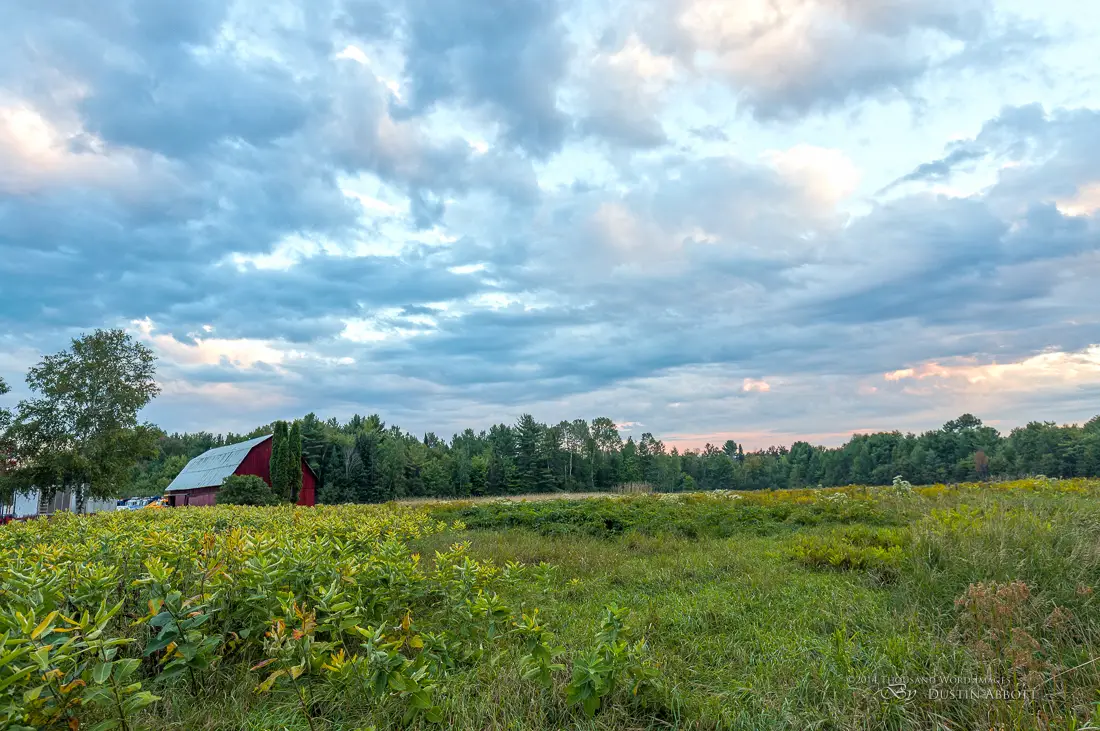
The lens cap is ane of Canon's new vastly improved center-pinch caps that both looks and performs better than the older design. Information technology feels well fabricated, unlike some pinch caps that experience somewhat loose and cheap in their design. The lens also included one of Catechism's piffling drawstring pouches, which, bluntly, have next to zero value for me. I'k not currently using whatsoever of them because they provide niggling protection – perchance your experience is dissimilar. I would greatly prefer 1 of Sigma's padded cases or a LowePro lens case.
AF and Image Stabilizer
Autofocus (AF) is as yous would await from Canon's premium line. It is extremely quick, very accurate, and quiet. It is not, however, silent, and I was somewhat surprised past the petty "shick" sound the AF motor made when focusing. This could exist an consequence for video use, although photographers will quickly melody information technology out altogether (or but use that slap-up manual focus ring!). The Image Stabilizer (IS) is also not silent, and y'all will hear a light humming/whirring sound when it is engaged. It is loud enough that you will always know when it starts and when information technology stops, and in this way information technology is slightly less refined than Tamron'south VC (Vibration Compensation) system. Both the AF and the IS are otherwise extremely competent, and both do their jobs very effectively. Focus is grabbed without hesitation, and focus accuracy is splendid. Both the nature of the wide angle focal length and the middling aperture make critical focus less hard, simply Canon has done a swell chore hither nonetheless. AF Servo tracking is equally excellent. I don't call up one rejected paradigm because of missed focus during my review flow.
Other than the slight objection to the noise level, I have no other complaints nearly the IS on the lens. Some might phone call IS unnecessary on a lens similar this, and I would concord that IS is certainly more critical on a telephoto lens. But if y'all are like me, however, you don't always have a tripod with y'all. The ability to handhold a shot similar this one at .3 of a second and get a sharp result like this is a very valuable asset to me.
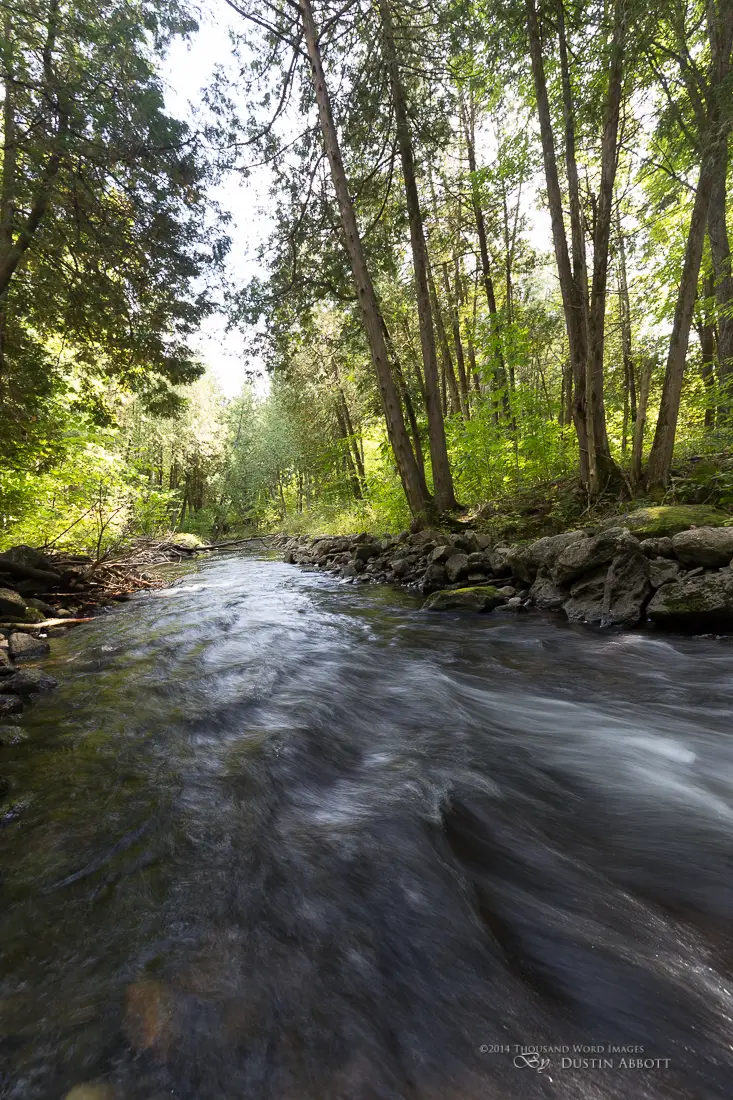
Ane could probably become even slower with good technique and get a number of keepers. This is practical value – I wanted some blurring of the water in this shot, and only low shutter speed would accomplish that.
The IS as well helps compensate for the f/four aperture, and that volition help convalesce the concerns of some that may exist coming from the 16-35mm f/two.8L. Finally, anyone that shoots video (at any focal length) volition certainly appreciate the stone steady image that the IS helps provide.
Field Use and Optics
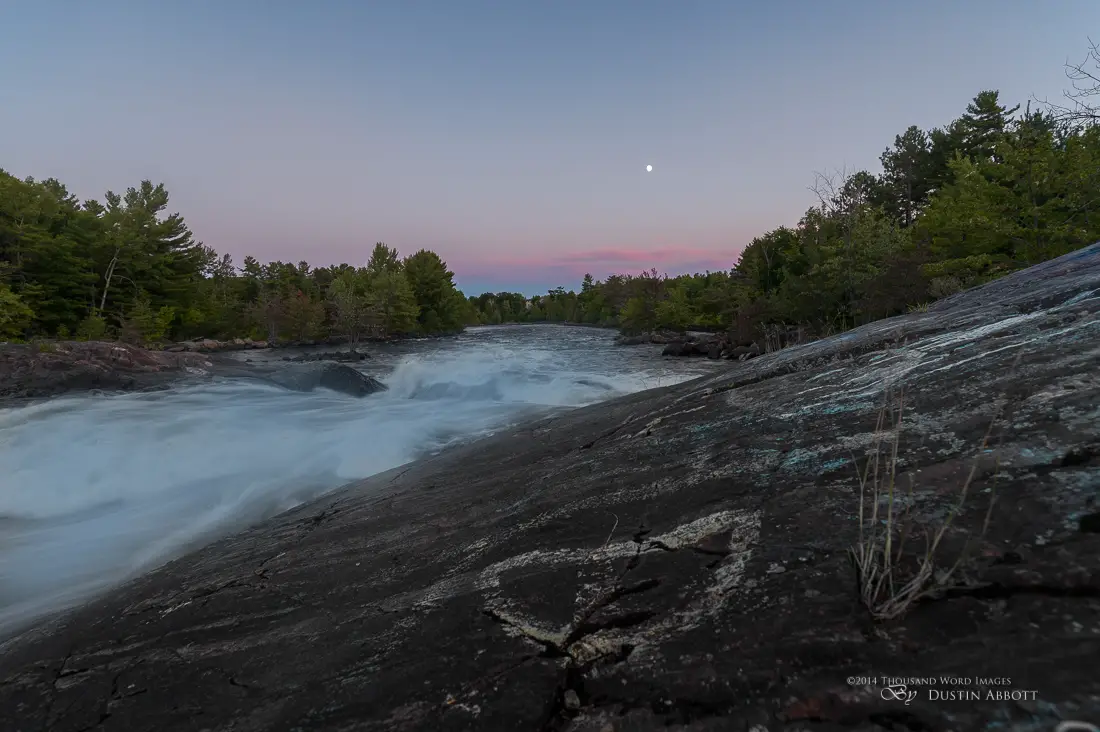
In the field the lens is a joy to use. Color rendition is splendid. That additional 1mm on the wide finish is certainly more important than the lost 5mm on the long end (when compared to the 17-40L) in my opinion. 16mm provides a 108 degree angle of view that is nicely broad (though not as dramatic as my Rokinon 14mm f/2.8 and it'southward almost 116 degree bending of view). Don't think of the focal range hither so much every bit a zoom as a lens with different framing options. That "zoom" doesn't become you lot a lot closer to your discipline but it does allow for a variety of framing options.
The sharpness is a definite improvement hither (over both the 17-40L and the 16-35 f/2.viii), particularly starting mid frame and into the corners. The corners in item show much more than sharpness, less vignetting, and less chromatic aberrations. That'due south what you call win win! The lens' sharpness is already excellent wide open and only mildly improves when stopped down. There will exist a chip less vignetting when stopped downward, but this lens is seriously improved in that section already. Sharpness peaks effectually f/8, although the difference is so incremental every bit to just be noticed on a chart. This lens likewise shows good microcontrast, which too helps images announced crisp and sharp. At that place is really zero to fault here. The lens is optically excellent. I have included a few full size samples for you lot to examine in detail in the lens gallery.

Information technology also exhibits less chromatic aberrations and less coma (distortion of tiny bright points like stars) than its predecessors. It isn't quite every bit practiced equally the Rokinon 14mm in the blackout department (or even the fiddling Rokinon 12mm f/2.0 lens for the EOS Grand system that I accept also just reviewed), but this is definitely a lens that can produce some killer nighttime sky shots (though the ability to only open up upwards to f/4 adds some challenge). I struggled to get proficient, clear night skies during my review catamenia, but I got a few shots that show that the lens can produce overnice looking starscapes, although it does lack the intense pinpoint particular that only lenses with super low coma can achieve. Knowing the lens' excellent sharpness potential makes me doubtable that infinity focus may come up a chip before the hard stop on the lens, as I relied on the hard stop on the focus ring to achieve focus at night. If you are able to better achieve critical focus you may be able to produce meliorate results that my examples (a darker heaven with more than contrast with the stars would help, too).
The lens tin focus downwards to 11″/280mm, but the loss of the 5mm of focal length ways that its maximum magnification is slightly less (.23x) than the 17-40L's .25x. This is a great figure nonetheless, and means that y'all can nicely emphasize a discipline while throwing the residue of the scene out of focus. This effect is manifestly less farthermost with an f/four aperture than it would be with a larger aperture. In these rare cases when you are creating bokeh highlights the highlights stay nicely rounded due to the 9 rounded aperture blades.

I also find the lens produces very attractive sunstars when stopped down. This paradigm shows a little extra ghosting because my CP-L filter is somewhat scratched, just it also really shows off the quality sunstar. This lens volition produce a scrap of ghosting in some situations, merely it certainly isn't extreme.
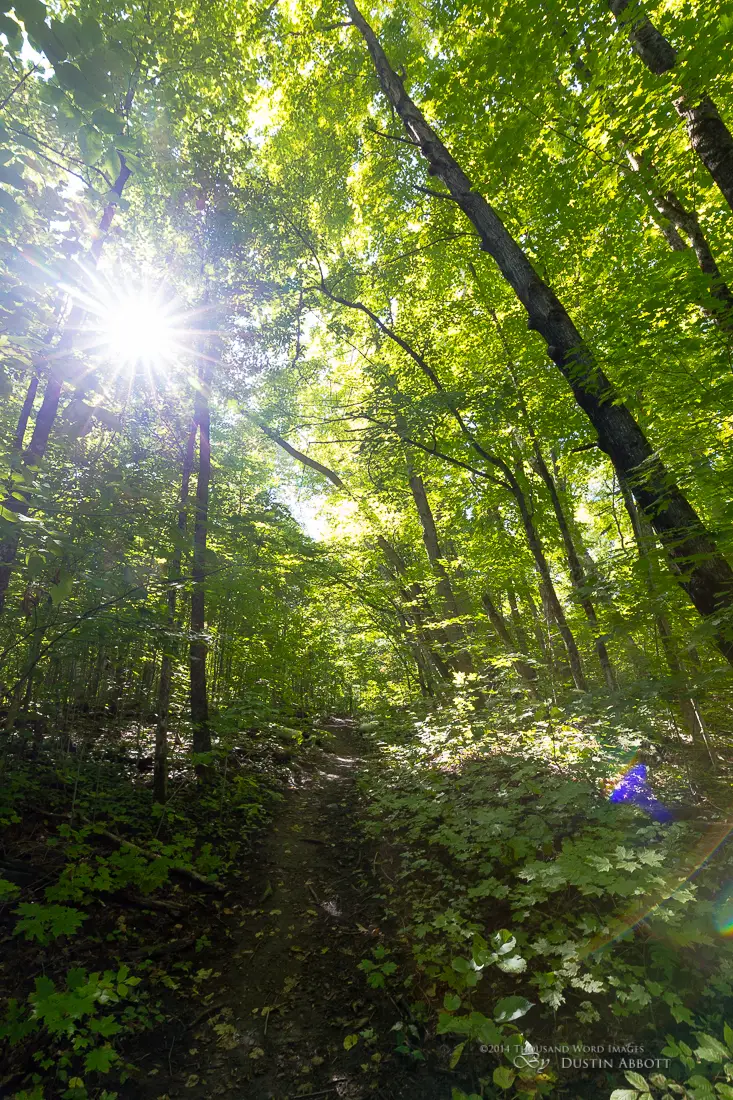
Distortion and Pocket-sized Quibbles
Any wide angle lens will have some distortion, and i quickly learns that the angle one shoots from will either exaggerate or diminish that distortion. This 16-35 f/4 IS does have some barrel distortion on the broad end, simply as the brick wall test shows information technology too corrects nicely with a standard contour in either Lightroom or Adobe Camera RAW. In that location is a minor corporeality of pincushion distortion on the long finish, simply this would exist near impossible to detect in field conditions.
Broad angle lenses have some practice, but that distortion tin as well be used in a creative fashion to emphasize things like the foreground.

The single greatest Achille'due south heal for this lens is ane shared with its f/4 predecessor: information technology is a little fleck tedious. It is extremely competent (and a serious upgrade from the 17-40L), but neither is it particularly exciting. My feeling about the 17-40L was that I liked it but did not love information technology. That is less the case here, but still somewhat true. The f/iv aperture limits creative options, and the angle of view isn't broad enough for extremely dramatic shots. It is a top of the line Toyota: utterly competent, brilliantly engineered, completely applied, but perhaps lacking a lilliputian soul.
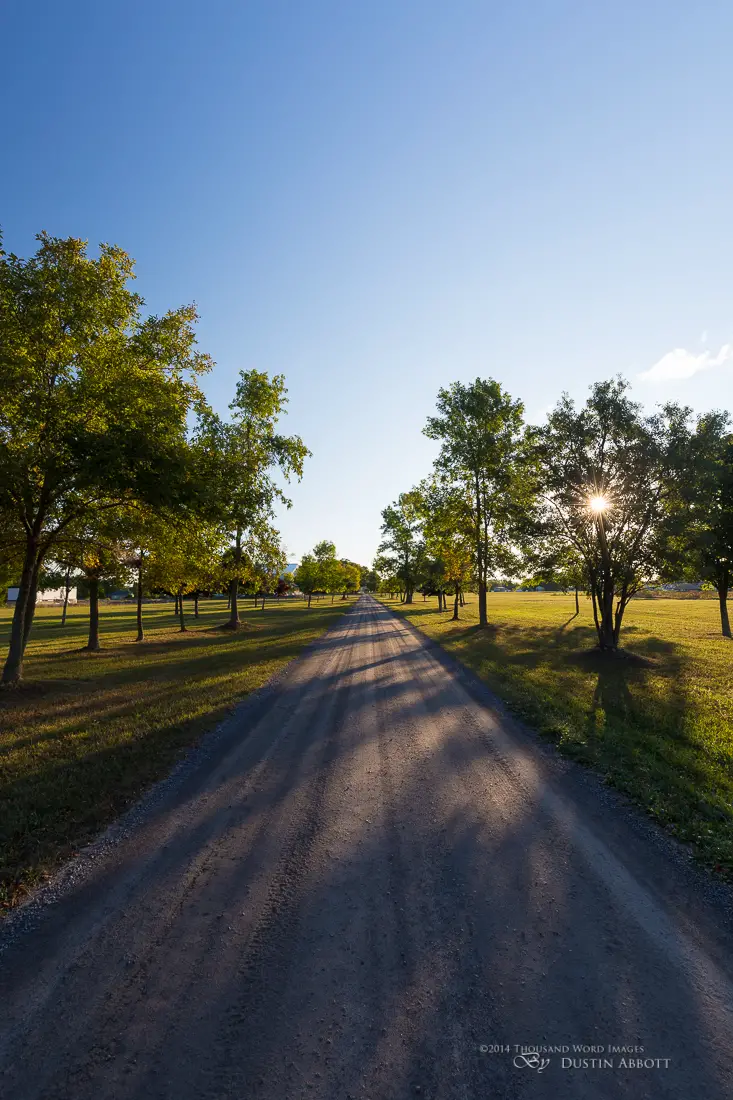
Simply I'm reaching hither.
This lens is good…actually, really expert. It is and so competent that you have to stretch to discover criticisms. What is even more true is that this lens is going to serve hundreds of thousands of photographers around the world very, very well. I added a number of fantastic images to my portfolio during the review menstruation, and I would take no hesitation to add this lens to my own kit equally the principal wide angle option. If you lot are in the market for a new landscape lens, expect no further. If y'all feel you lot need the f/2.8 aperture for result piece of work or some other purpose, the EF 16-35mm f/ii.8L II may still exist the better lens for you (I'll also soon be testing Tamron's newly announced SP 15-30mm f/2.eight Di VC USD – should be interesting!). Many photographers take already embraced Canon's newest wide angle zoom and have discovered that the EF sixteen-35mm f/4L IS is the lens they have been looking for from Catechism for a long time!
Pros:
• Excellent Canon 50 Serial build quality (Roger over at LensRentals has expert things to say about its internal structure too.)
• Fast and highly accurate AF
• Well mannered and constructive Prototype Stabilizer
• Sharp, sharp, sharp…even into the corners (which wasn't true of previous WA zooms from Canon).
• Chromatic aberrations well controlled.
• Flourine coatings help with keeping the outside elements clean.
• Weathersealing
• Well designed lens hood that is far more practical and functional than previous WA zoom lenses.
• Does a lot of things very well at a reasonable price
Cons:
• Some will exist limited by the maximum f/4 aperture.
• AF and IS are audible in functioning – could touch video work.
• Not incredibly exciting????
Check out the Lens Gallery for many more photos and some total size samples.
Note: I reviewed a retail copy of the lens provided courtesy of B&H Photo. As ever, I strive to exist equally objective and balanced every bit possible when doing these reviews. All of the photos in the review accept been taken by me using this re-create of the lens. Most all shown in the review themselves have received only minimal processing.
Gear Used:
Canon EOS 6D DSLR Camera (Torso Simply)
Canon EF sixteen-35mm f/4L IS USM Lens
Adobe Photoshop Lightroom five Software for Mac and Windows (Boxed Version)
Adobe Photoshop Artistic Cloud one-Yr Subscription
Conflicting Skin Exposure 6
Purchasing your gear through B&H and these links helps fund this website and keeps the articles coming. Thank you for your support.

Not bad News! I tin now offer a 5% discount on all purchases at Amplis Foto, Canada'south Leading Photographic Supplier. Please enter discount code: AMPLIS52014 in your cart. Information technology is good for everything in your cart, and is stackable with other coupons, too! It will have five% off your unabridged order! Gain get towards keeping this site going and providing yous with new reviews!
[contact-form-7 404 "Not Establish"]
DISCLAIMER: This article and description contains affiliate links, which means that if y'all click on one of the product links, I'll receive a small committee. As an Amazon Associate I earn from qualifying purchases.
Source: https://dustinabbott.net/2014/09/canon-ef-16-35mm-f4l-is-usm-review/
0 Response to "Canon Ef 16-35mm F/4l Is Usm Lens Review"
Postar um comentário